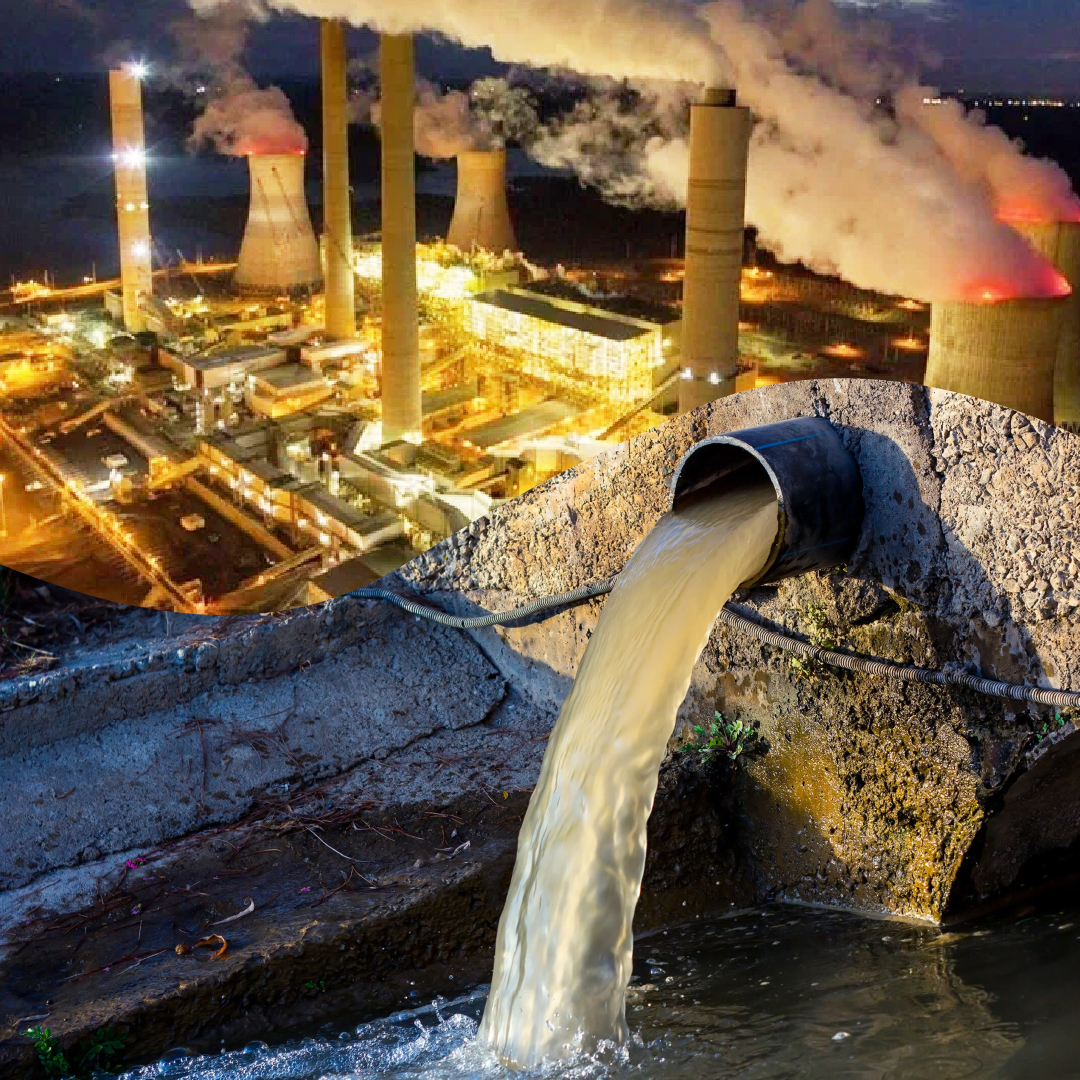Seventy-two years old Muhammad Usman lives in the Chakar Khan Rajar, a village of Union Council Railo (formerly Petaro), on the west bank of the Indus river in Jamshoro district. He is old and tired.
His lungs are infected and he has trouble in breathing. Most of his miseries have been caused by the Jamshoro Thermal Power Station (TPS), which destroyed his fertile agricultural lands but he could do nothing to prevent it.
Usman begins his story with launch of the construction of the power station in 1988. According to him, the thermal power plant became functional in 1989. However, the company had made no plan to drain the wastewater discharged from machines and boilers.
“They discharged the wastewater into the land next to the plant. My 250 acres of land starts at a little distance from the plant. This water gradually ruined my land after the government land became a marsh.”
Muhammad Usman has got all the records. He has all the files, including court decisions, reports of surveys conducted at distinct times, and documents of the officers of commissioner, deputy commissioner and assistant commissioner.
According to him, he did not spare any court and knocked on every door where he saw the slightest hope of redress of his problem and loss of land. However, he did not get justice.
He claims that due to moving courts against the injustice, he faced about 42 cases filed against him and his five sons by the company’s contractors. He remembers the entire profile of judges and police officers.
“Now they are also setting up a coal-fired power plant (coal power plant) on the premises of thermal power station. They have no idea of the disaster it will bring about.”
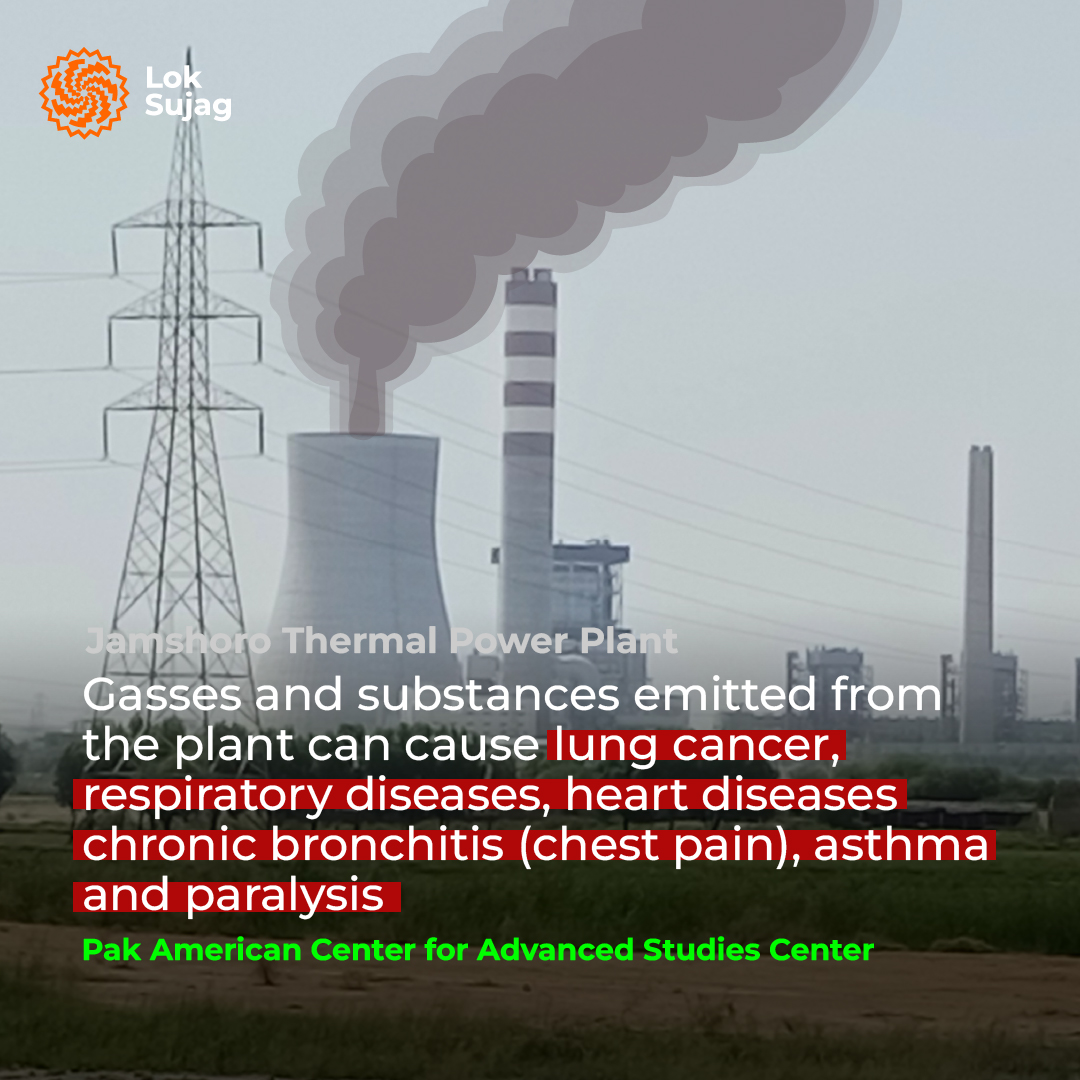
The drains of Jamshoro Thermal Power Station have destroyed the lands of not only one village of Union Council Railo (Petaro) but five villages, namely village Chakar Khan Rajar, Ramzan Rajar, Bhigu Khan Mirjat, Imam Bakhsh Barfat and Siddique Rajar.
The plant is located on the Indus Highway (N-55), north of Jamshoro town, which is 150km from Karachi. This thermal power station falls under the federal government. It is operated by Jamshoro Power Generation Company (Genco-1), a subsidiary of the Ministry of Energy (Power Division).
Wapda had established Pakistan's first gas-fired power station (GTPS) in the industrial area of Kotri, 12km from Jamshoro, which was extended in 1981 and 1994. This plant was capable of generating 144MW (installed capacity). Its two units from 1969-70 were retired long ago.
Wapda installed a second plant near Jamshoro between 1989 and 1991. It had an installed capacity of 850MW and it was called Jamshoro TPS.
In 1999, Genco-I was established under Wapda and the Kotri and Jamshoro power plants were transferred to this company. Since then, both plants have been owned by Genco-I.
According to the Licensing Group, a steam power (thermal) plant has a life of around 30 years and a gas turbine generation unit has 20 to 25 years lifespan. Hence, Kotri Power Station is nonfunctional and has been fully decommissioned (retired) for four years.
“However, we are hearing new stories of Jamshoro Thar Mill Power Station.”
Muhammad Usman Rajar mentions that they did not build the Jamshoro TPS drain when the vast area was surrounded by dirty water.
Later, a drain was made without leveling and lining and it falls into the river Indus a few miles away.
“When the water level in the river rises, this ‘marsh-like’ channel flows backwards and overflows, submerging the surrounding communities.”
The Jamshoro TPS, consisting of four installed units, has a capacity of 850MW. The first unit, running on furnace oil, has an installed capacity of 250MW.
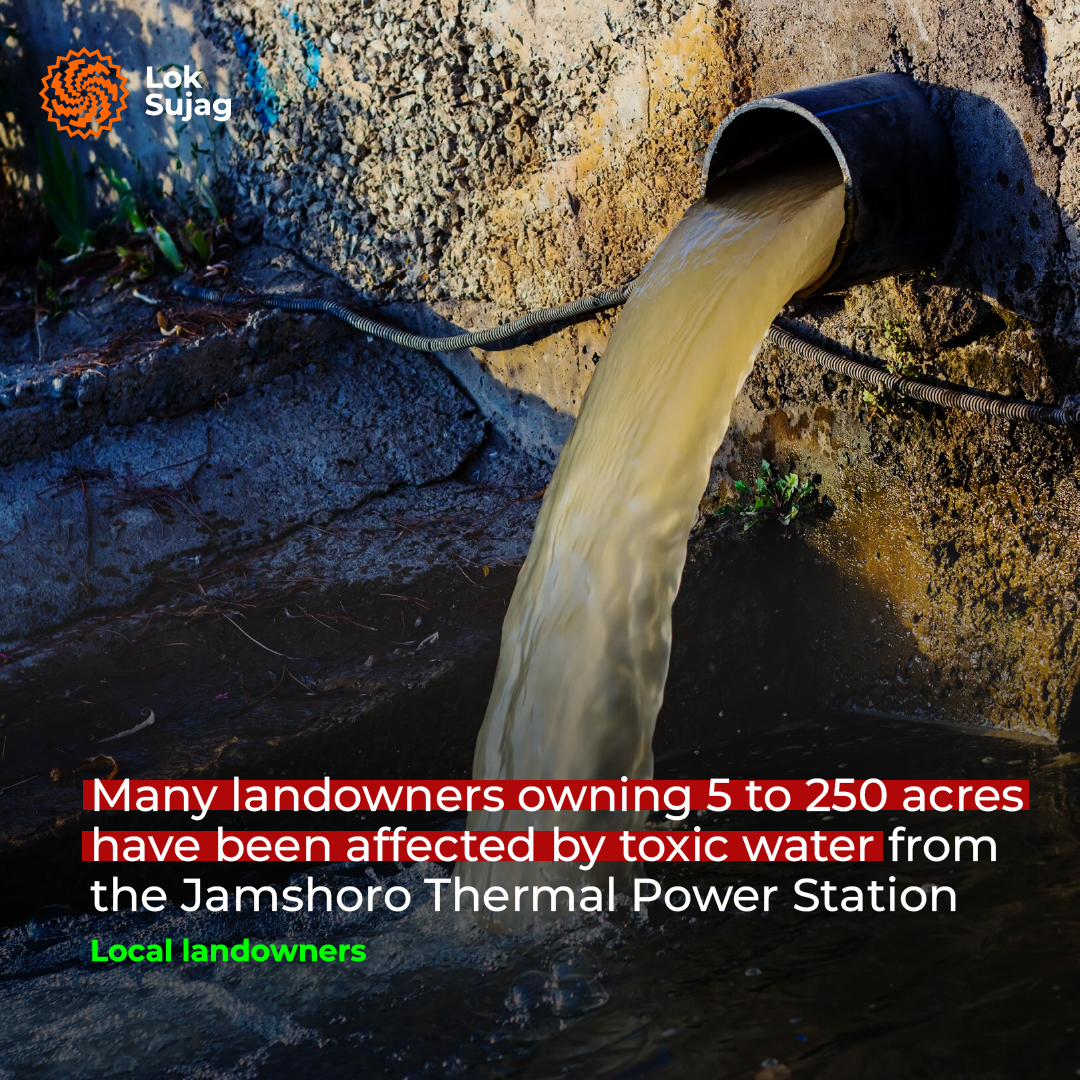
Three furnaces run on oil and gas with a total capacity of 200MW. The generating capacity of this three-mill power station has now dropped to 675MW.
Destruction by Jamshoro Thermal Power
Records of the Sindh Irrigation Department show that Jamshoro TPS’s unit one has been paying for drawing about 1.41bn cubic (mixer) feet of water from the department since 1994. By the end of 2022, TPS owed more than Rs190m to the department in this regard.
According to the record, six units of TPS have been continuously using 8.8bn gallons of water annually since 1999, which falls into this drain along with several other impurities.
The data received from the company management confirms that 1,215 metric tonnes of wastewater is released per hour by running four thermal power units.
Ghulam Nabi Rajar, a local landowner and elected member of the district council from Union Council Railo, is also among the victims.
He says that dozens of landowners from five to 250 acres of land have been affected by the TPS groundwater.
“People whose only profession was agriculture migrated after their land became barren. In some agricultural areas, water has been standing for 40 years, while in others, it has been stagnant for 20 years, and some land has been submerged for five years, which has now become barren due to toxic substances.”
More than 25,000 people are currently living in the middle of the plant's contaminated water, Ghulam Nabi Rajar says and adds that not only people but cattle are also suffering from diseases.
“We have complained to every court and office. Finally, our voice reached the rulers as well as the company in 1993/94. It was decided that the landowners would get Rs5,000 per acre. However, the victims received this amount for only one or two years.”
Usman confirms that after the survey, his neighbour got about Rs1.5m for three instalments of two crops. The cheque was issued by the Land Acquisition Officer of Thermal Power.
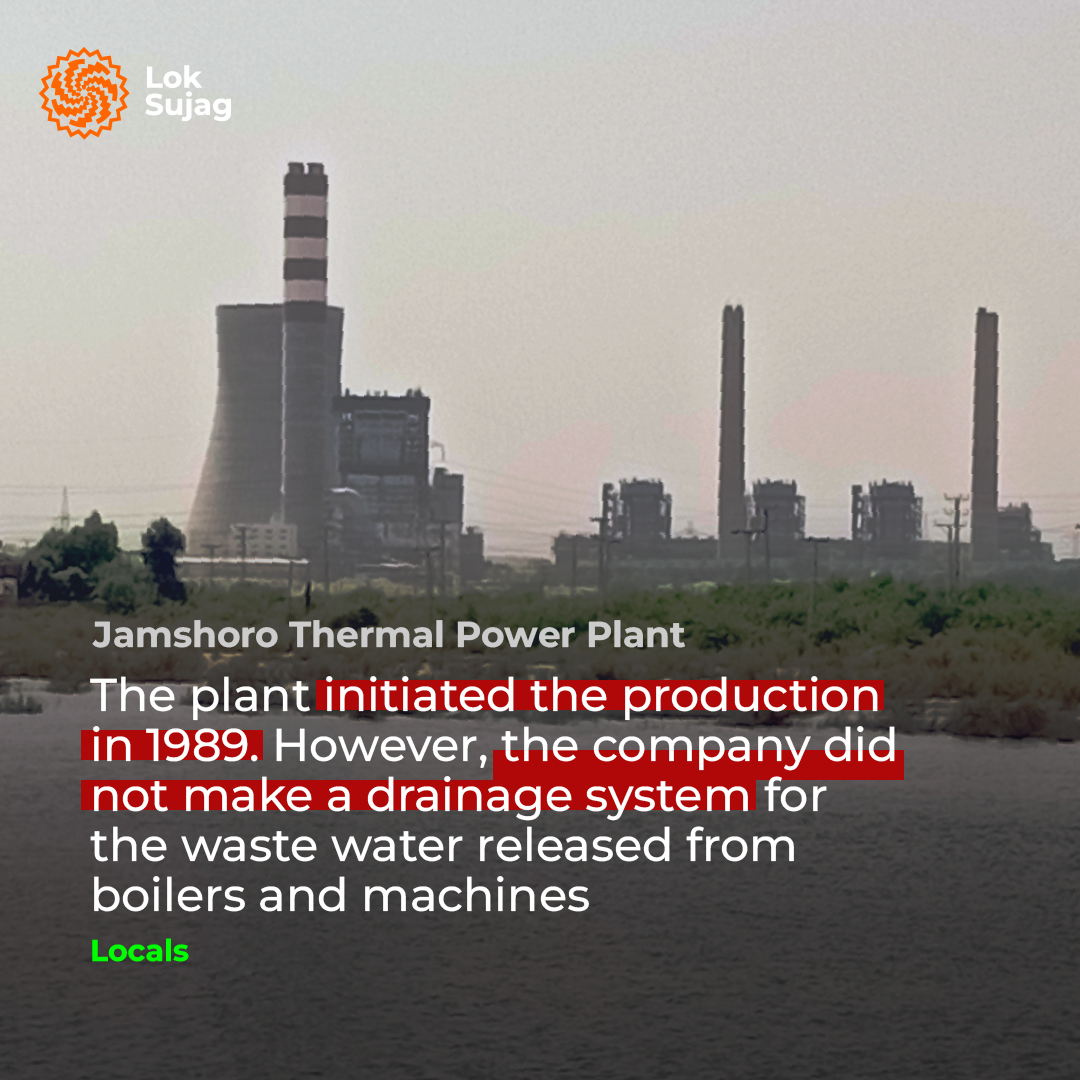
“Today, our lands have more toxic water than before. Why is the government not compensating us now?” he asks.
Ghulam Nabi Rajar says the drain often breaks from one place or another. Twenty-five percent of it was made of concrete in 2007 and 2018 due to public outcry but its condition now is the same.
According to Usman Rajar, the extreme cruelty is that the drain channel has never been repaired or cleaned since it formed. A crack is found in it every 10 to 15 steps.
“You will see water everywhere. I was a big landowner once and had more than 40 farmers to work on my land. We only have the memories of Kanki (millet), Jowar (sorghum), Bajra (pearl millet), cotton and vegetables that used to grow here. But the ancestral land and cemeteries cannot be left.”
However, Resident Engineer (Operations) of Jamshoro Power Company Limited, Abdul Ghani Jamali, says the land owners or the victims got the amount on the plant commencement.
“The length of the drain channel to the river is about five kilometres which receives the clean water of the treatment plant. But there has been no water due to the plant closure since 2021.”
However, he admits that from 1990, water was continuously released into the canal until three years ago.
Jamali says all the payments to the victims are made through the Jamshoro DC while the revenue department does the survey.
In this regard, written questions were also sent to Jamshoro DC Riaz Ahmad Wasan to know his stance but no response was received.
The officer who was additional deputy commissioner in Jamshoro for four years after 2012 anonymously mentions that the company neither surveyed the affected agricultural land nor did make any payments. “The local landlords complained against the company.”
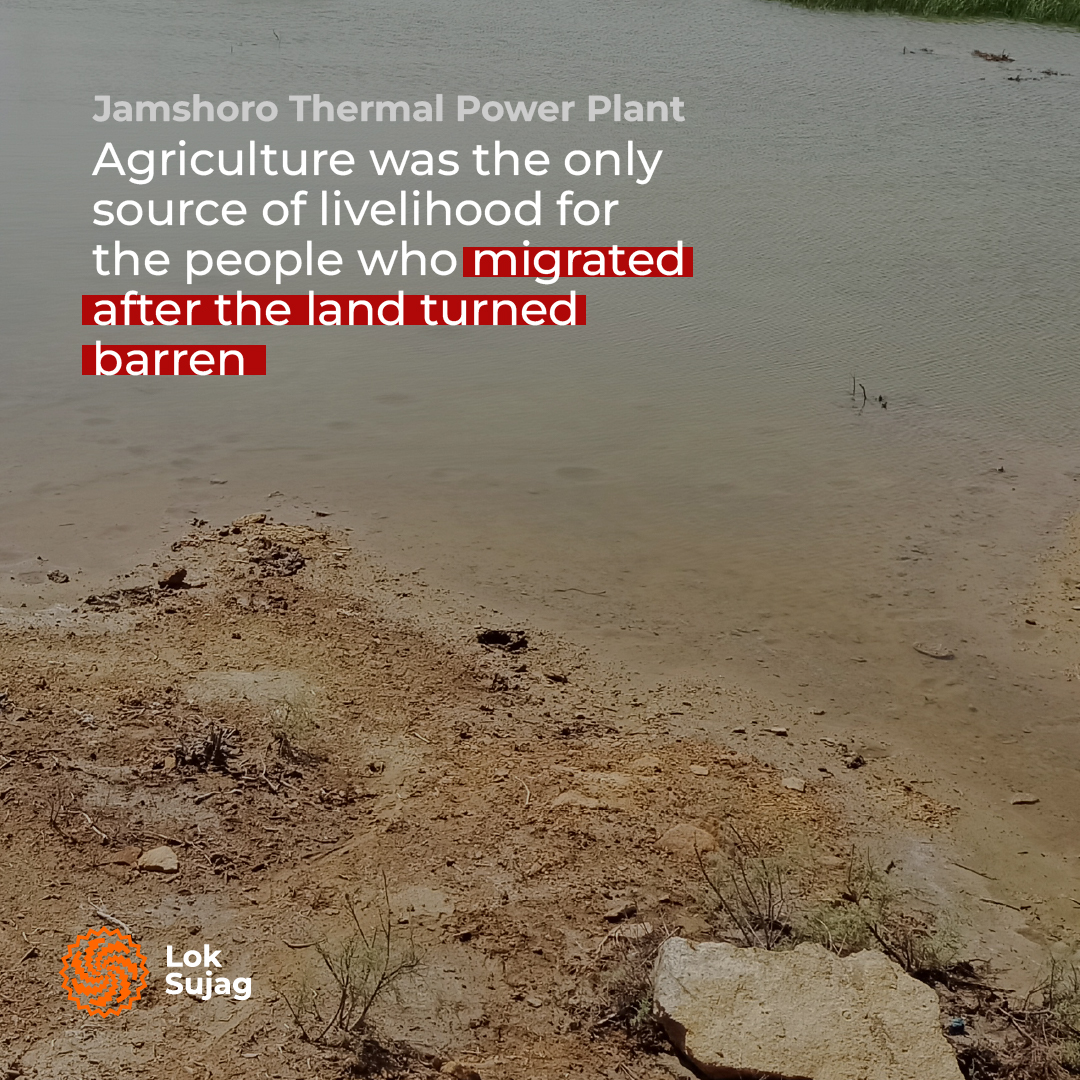
He believes that the company must have been depositing the corporate social responsibility (CSR) amount to the DC office.
On the Sindh High Court’s orders, a six-member committee consisting of district administration, thermal power officials and revenue officials was formed under the chairmanship of Jamshoro Civil Judge Noor Ahmed Chandio to review the submerged or affected lands.
In June 2018, this committee submitted a report to the high court according to which 180 acres of land in Dihah Badah Reti (Union Council Railo) has been affected by the release of the Jamshoro Thermal Power water.
Ghulam Nabi Rajar and other landlords disagree with the survey’s data. According to them, the land affected by the drainage water is more than 2,000 acres.
Thermal and Coal power project, side by side
A coal power project of 1,320MW capacity is now under construction on the Jamshoro TPS premises under the supervision of Genco-1 which has two units each capable of generating 660MW electricity. This will take the total installed capacity of Genco-I to 2,170MW.
Details on the company's website show that this project will use 80pc imported and 20pc Thar coal.
The Asian Development Bank (ADB) is investing with Genco in this coal power project worth $1.5bn.
In 2013, an environmental impact assessment of the coal project at Jamshoro TPS was carried out with the support of the ADB.
According to the report regarding the installation of the coal project, the discharged water’s effect on the agricultural lands and livestock is at the top among the concerns of the local people.
This report confirms that the drainage water of Jamshoro TPS flows through an open drain through the agricultural lands of the locals. The landowners have complained that their lands have been flooded due to polluted water.
In the review report, it was suggested that the drain should be paved but no one has taken action for nearly 11 years from 2013 to 2024.
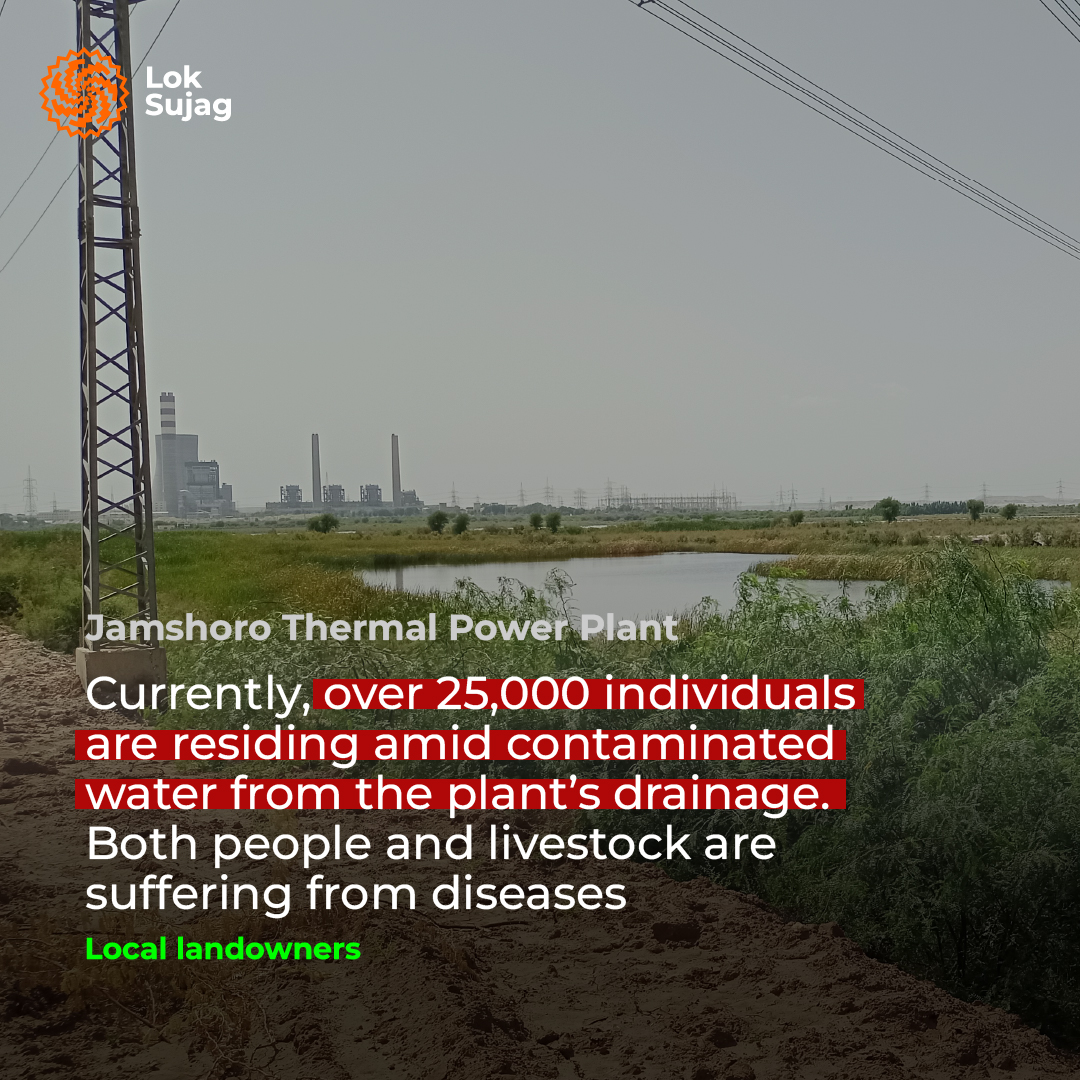
According to the report, the irrigation department has reserved 40 cusecs of water for the new coal power project, which will be taken from the Indus river. Sixteen pumps will be installed to take this water, responsible for fulfilling the water requirement of the plant and residential colony.
The resident engineer (Operations) of the Jamshoro TPS says the coal plants are not operational yet but their discharge will also fall into the same drain. One cannot give any opinion on its influence.
Resident Engineer (Operation) Jamshoro Power Company Ltd Abdul Ghani Jamali says that Jamshoro TPS occupies 885 acres of land in which there is a 500kW grid station, a residential colony and the two units of the coal power project.
According to the latest evaluation report of the Implementation Unit of the Jamshoro Power House Generation Project, coal units will not need additional land. An area of 100 acres will be required to construct ponds (ash ponds) for coal ash only.
“This land will be purchased from the Sindh government at Mohra Jabal village at the market price which is Rs1.5m per acre. The paperwork has also been completed for this purpose.
On Aug 2, 2022, the Sindh Cabinet did not approve this land and imposed a condition that an environmental impact assessment report should be prepared by the Sindh Environmental Protection Agency (Sepa).”
According to the implementation report, the construction of one of the two coal power projects, the 660MW unit, is 97pc complete.
The ‘City of Knowledge’ and Right to Breathe
Near the Jamshoro TPS where the coal power project is being installed is known as the ‘City of Knowledge’ (due to educational institutions) in Sindh.
The Liaquat University of Medical and Health Sciences and its hospital is just beside the thermal and coal plants.
Also Read
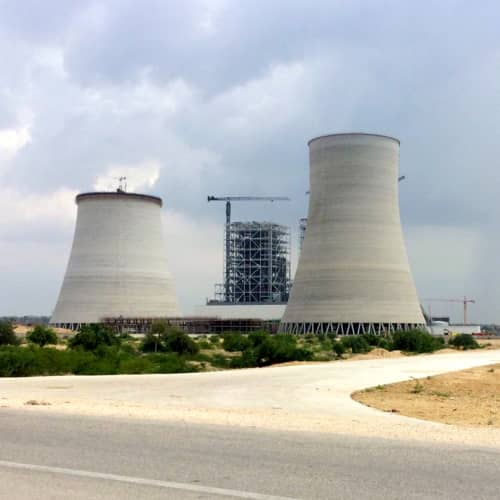
Coal-fired power plants in Thar: 'Our lands are being taken away and our way of life is being changed'۔
The University of Sindh is located next to the Liaquat Medical University while adjacent to it is the Mehran University of Engineering and Technology. Shaheed Allah Bakhsh Soomro University of Arts and Design is located in its vicinity while the Cadet College Petaro is three kilometers from the power project.
Residential colonies of all educational institutions, hostels and housing schemes are also located here which extend to the Jamshoro city. The Indus river flows at a distance of five kilometres in the east. Ancient villages, human settlements and agricultural lands lie between the power units and the river.
Member District Council Ghulam Nabi Rajar says the impact of the coal power project in Jamshoro will directly affect the human population. “These are plans for destruction that have already snatched the fertile lands from the people but now their right to breath should not be taken away.”
Not only Ghulam Nabi Rajar and Muhammad Usman Rajar but local youths are also protesting against the coal power.
The Indus Climate Forum organised a protest walk on Sept 13 against coal power’s environmental, agricultural and land pollution with an active participation of farmers, university students, professors, researchers and civil society representatives.
A report by PRIDE (Policy Research Institute for Sustainable Development), an organization working on equitable development and environment, states that the first unit of Jamshoro Coal Power Project was supposed to be operational by March 31, 2019. However, the deadline has been extended several times.
The ADB will invest $900m, the Islamic Development Bank will put in $220m dollars and Pakistan government will invest $380m in this project worth $1.5bn.
According to a joint research report by the universities of Sindh and Balochistan and the Pakistan-American Center for Advanced Studies, the new plants at Jamshoro TPS will increase Pakistan's coal consumption to around 3.4 million tonnes per year.
“If air pollution control measures are abandoned in Jamshoro, it will result in an annual production of 850 tonnes of carbon monoxide, 36.83 kilotons of nitrogen oxides, 80.74 kilotons of sulfur oxides/year, and 39 kilotons of particulate matter (PM-10).”
According to this research, these gases and substances can cause lung cancer, respiratory diseases, heart diseases, chronic bronchitis (chest pain), asthma and stroke in humans.
Ironically, Sindh’s largest cancer treatment centre has also been set up at the Liaquat Medical University Hospital near the Jamshoro Coal Project.
Published on 20 Sep 2024
